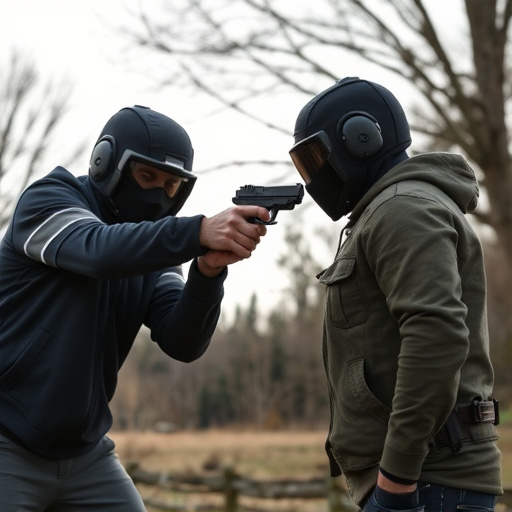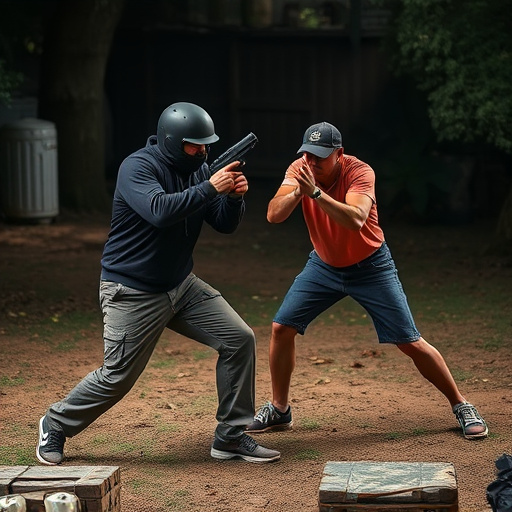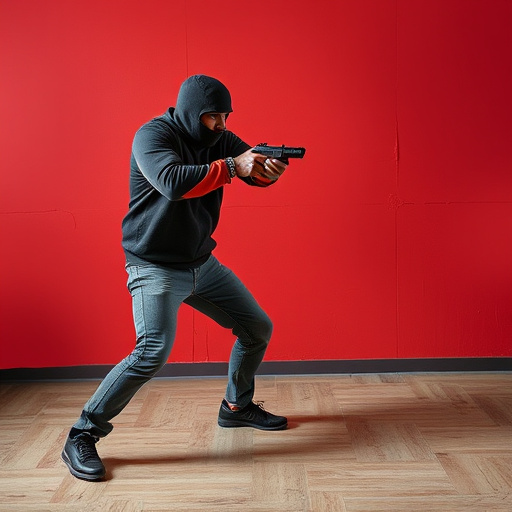Police-grade stun guns are essential non-lethal force tools for law enforcement, prioritizing officer safety in high-risk situations with advanced features like automated shut-off and adjustable voltage. When choosing a stun gun, consider options with high voltage (50,000-120,000 volts), strong current (milliamps), effective energy output (joules), pulse width, and safe mechanisms like finger triggers. Look for industry standards compliance, robust design, and an effective range to ensure optimal performance and safety.
In today’s world, law enforcement agencies and civilians alike are turning to police-grade stun guns as a nonlethal self-defense option. Understanding the role and safety features of these devices is crucial. This article explores various aspects of debilitating electrical charge weapons, with a focus on high-performance stun gun specs. From voltage and energy levels to design and safety mechanisms, discover what makes an effective stun gun and explore top police grade stun gun options available in the market.
- Understanding Police-Grade Stun Guns: Their Role and Safety Features
- Debilitating Electrical Charge Weapon Specs: What to Look for in a High-Performance Stun Gun
Understanding Police-Grade Stun Guns: Their Role and Safety Features

Police-grade stun guns are powerful non-lethal weapons designed for law enforcement and security personnel, offering a range of options to ensure officer safety during various high-risk situations. These devices emit an intense electrical charge, temporarily incapacitating suspects without causing permanent harm. The role of such stun guns is multifaceted; they serve as a less-lethal alternative to firearms, allowing officers to control and subdue individuals while minimizing the risk of fatal injuries.
Safety features are a key consideration in police-grade stun guns. Many models incorporate advanced safety mechanisms, including automated shut-off after discharge, ensuring the device is safe for both user and bystander. Some options feature adjustable voltage settings, allowing officers to adapt the stun gun’s power output according to the situation and local regulations. Additionally, ergonomic designs and durable construction make these weapons easy to handle and resistant to extreme conditions, making them reliable tools in high-pressure law enforcement environments.
Debilitating Electrical Charge Weapon Specs: What to Look for in a High-Performance Stun Gun

When considering a debilitating electrical charge weapon, such as a stun gun, it’s crucial to look for features that ensure its high performance and effectiveness. Police Grade Stun Gun Options typically offer enhanced durability and reliability, making them a top choice for law enforcement and personal protection. Look out for specifications like voltage output (typically between 50,000 to 120,000 volts), current strength (measured in milliamps, with higher values offering better stun capability), and energy output (measured in joules). These parameters directly correlate to the weapon’s ability to disrupt an attacker’s muscular system and incapacitate them.
Additionally, consider factors like pulse width, which affects the duration of the shock, and safety features such as finger-trigger mechanisms for precise control and reduced risk of accidental activation. A robust design that withstands extreme conditions and a good stun range (the distance at which the weapon is effective) are also essential. Always opt for models that meet or exceed industry standards for safety and performance, ensuring you have a reliable tool in situations requiring immediate self-defense or law enforcement intervention.
When choosing a police-grade stun gun, understanding its specifications and performance is crucial. Debilitating electrical charge weapons come in various options, each with unique features designed for high-intensity situations. Look for advanced safety mechanisms, durable construction, and powerful jolts to ensure effectiveness during critical incidents. Opting for the right Police Grade Stun Gun Options can make all the difference in self-defense and law enforcement scenarios, providing a crucial tool for safety and protection.
